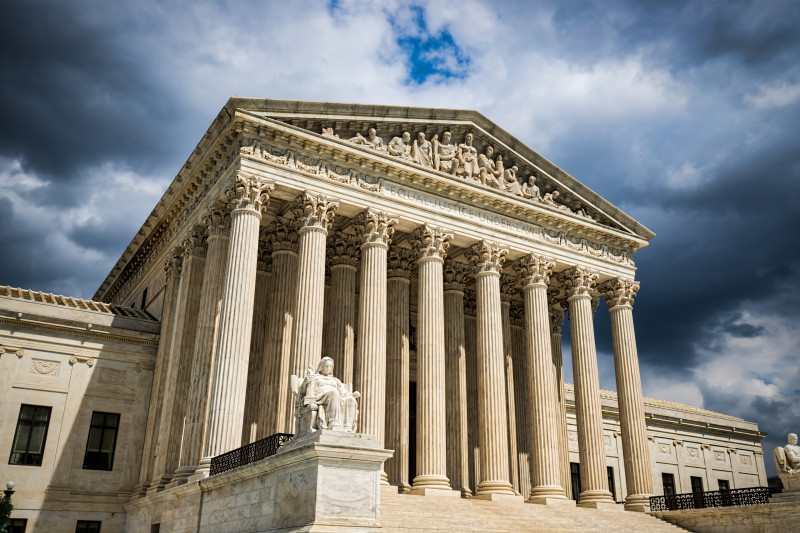The Supreme Court’s decision has the potential to heavily impact current lending practices.
On March 3, 2020, the U.S. Supreme Court heard oral arguments in Seila Law LLC v. Consumer Financial Protection Bureau. The issue in this case is whether the structure of the Consumer Financial Protection Bureau (CFPB) violates Article II, Section 3 of the U.S. Constitution.
The current structure of the CFPB as created by Title X of the Dodd-Frank Act allows for a single director of the CFPB appointed by the president, but not removable by the president, except for-cause. However, Article II, Section 3 of the Constitution empowers the president to “take care that the laws be faithfully executed.” If the president can only remove the director of the CFPB for-cause, then perhaps the structure of the CFPB has impinged upon the president’s constitutional authority. This is the issue the U.S. Supreme Court is set to decide in a ruling to be issued sometime this summer.
Implications for Private Lending
One possible outcome of the Seila Law case is that CFPB directors would now be removable for any reason, much as other agencies cycle appointments under new presidency terms. A ruling in favor of Seila Law could also call into question all the CFPB regulations that affect the private lending industry.
Some of the laws the CFPB enforces include the Truth in Lending Act (TILA), the S.A.F.E. Mortgage Licensing Act, the Home Mortgage Disclosure Act (HMDA) and the Fair Credit Reporting Act (FCRA). These laws and others that the CFPB enforce shape the contours of the private lending industry. Note that, in particular, the private lending industry exists within TILA’s “business purpose” exemption as interpreted and enforced by the CFPB. If the CFPB or any other federal regulator stopped enforcing TILA, regulation of the private lending industry would be left for the states to enforce.
In an attempt to insulate the CFPB from political pressure, the Dodd-Frank Act takes several steps, including funding the CFPB through the Federal Reserve System rather than through Congress. In addition, it makes the CFPB director, who is originally appointed by the president and approved by the Senate for five years, removable from his or her position only for “inefficiency, neglect of duty or malfeasance in office.”
The stark differences in how the CFPB has been run under a director appointed by President Obama versus how it has been run under President Trump illustrates how much politics can affect the operation of the bureau.
During the tenure of Obama-appointed Director Richard Cordray, the CFPB collected an average of $59.6 million in consumer restitution per case of illegal consumer financial practice. But after his departure and Trump’s appointments of Mick Mulvaney and Kathy Kraninger, the CFPB collected an average of $2.4 million in restitution per case, a 96% decline.
The contrast between the actions of the Obama director and the Trump directors highlight how the CFPB’s for-cause removal provision can impinge upon the president’s power to implement more borrower-friendly or lender-friendly policies.
Basis for Legal Challenge
The plaintiff in this case, Seila Law LLC, describes itself as a California-based law firm operated by a solo practitioner working primarily to defend clients from creditor lawsuits and to resolve consumer debt. While still under Director Cordray, in early 2017, the CFPB began investigating Seila Law for unlawful practices in advertising, marketing and sale of debt relief services.
In conducting its investigation, the CFPB issued a Civil Investigative Demand to the firm. According to the CFPB, Seila Law’s response was woefully inadequate. However, Seila Law declined to provide further responses and challenged the enforceability of the CFPB’s demand on the grounds that the CFPB was unconstitutional. The lower federal courts ruled against Seila Law, and Seila Law appealed to the U.S. Supreme Court.
Seila Law’s case rests upon the doctrine of separation of powers arguing that Congress impinged upon the president’s power by limiting his/her ability to remove the director of the CFPB. Lower courts have upheld the constitutionality of the for-cause removal limitation of single directors, although such cases have never reached the Supreme Court.
The only similar case to reach the Supreme Court previously was Humphrey’s Executor in 1935, and while the Court also upheld the constitutionality of the for-cause removal limitation, the case applied to five Federal Trade Commission (FTC) directors, rather than a single director. The single director issue arose before the D.C. Circuit in 2016 in PHH Corp. v. CFPB, when then Judge Kavanaugh, who was on the court, ruled against the structure, but this case was never heard by the Supreme Court.
In its brief to the Supreme Court, Seila Law argued that the CFPB is unconstitutionally structured for several reasons: (1) the CFPB limits the president’s otherwise expansive power to remove principal officers, (2) Humphrey’s Executor, which restricts removal power, does not apply, should not be expanded and is bad law and (3) the novelty of the CFPB’s structure is constitutionally problematic.
The arguments for the CFPB’s current structure set out by the lower courts who decided this case and in the En Banc decision in PHH Corp. and by constitutional scholars are (1) the CFPB’s structure is analogous to the FTC in every way relevant under Humphrey’s Executor, (2) removal power jurisprudence has never considered internal checks within an agency to be a substitute or corollary to presidential oversight, (3) the means of independence employed by the CFPB is not novel, and even if it is, the parties give too much weight to its novelty and (4) Humphrey’s Executor should not be overruled because doing so would put into question the constitutionality of other independent federal agencies that are vital to a functional government.
Potential Outcomes
Due to the Supreme Court’s conservative, agency-unfriendly makeup, it is a real possibility that the Court will at least strike down the for-cause provision. While Seila Law has requested that if the court finds the removal provision unconstitutional, the Court should strike down the entirety of Title X because the removal provision is inextricably linked, it is unlikely the Court will accept this drastic remedy of abolishing the CFPB altogether.
In the initial PHH Corp. v. CFPB decision, then-Judge Kavanaugh ruled that the proper remedy would be simply to sever the for-cause removal provision. If Justice Kavanaugh, who is among the most outspoken critics of the administrative state, ruled for limited severance, the other conservative members of the Court are unlikely to take a more extreme position, especially at the risk of being accused of judicial activism.
For private lenders, the Court’s decision has the potential to heavily impact current lending practices.
If the Court determines the for-cause removal provision is constitutional, the status quo will remain with regards to lending practices and policies.
If the Court finds the for-cause removal provision is unconstitutional but can be severed from Title X, the president will have the authority to hire and fire the CFPB director at will, meaning the sitting president’s policies will more directly impact CFPB enforcement and, therefore, the private lending community at large.
In the highly unlikely scenario where the Court finds the for-cause removal provision is unconstitutional and cannot be severed from Title X, the CFPB will no longer have constitutional authority to exist. If this happens, the future of the bureau and its regulations affecting the private lending industry will remain uncertain unless the president and Congress can pass legislation resolving the issue.











Leave A Comment